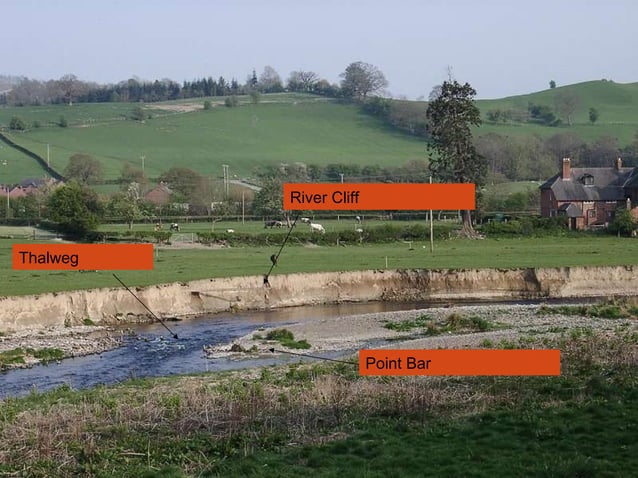

The river then follows a shorter course that bypasses the meander. This takes place because meanders tend to grow and become more curved over time.

Geology A meander develops into an oxbow lakeĪn oxbow lake forms when a meandering river erodes through the neck of one of its meanders. The word "oxbow" can also refer to a U-shaped bend in a river or stream, whether or not it is cut off from the main stream. In Australia, oxbow lakes are called billabongs. In South Texas, oxbows left by the Rio Grande are called resacas. The picture also shows that a third oxbow lake is probably in the making: the isthmus or bank in the centre of the most prominent meander is very narrow – much narrower than the width of the river eventually, the two sections of river on either side of an isthmus like that tend to break through and create a new, straighter course a new river bank then starts to accumulate, sealing off the meander and leaving another oxbow lake.Īn oxbow lake is a U-shaped lake or pool that forms when a wide meander of a river is cut off, creating a free-standing body of water. This picture of the Nowitna River in Alaska shows two oxbow lakes – a short one at the bottom of the picture and a longer, more curved one at the middle-right. This highlights the potential importance of intrinsic channel processes as a control on system evolution not just in plan-view, but also on incision and aggradation.For other uses, see Oxbow lake (disambiguation).

Trends in sinuosity, aggradation and slope are in broad agreement between the Joshua and the model. Using a simple forward stratigraphic model in which vertical movements of the channel are governed by a stream power law, we show how aggradation can be driven autogenically. We show how increasing channel sinuosity correlates to a reduction in channel slope and hypothesize this promoted increasingly depositional turbidity currents that led to channel aggradation. An abrupt decrease in sinuosity was associated with a neck cutoff, which changed the subsequent migration direction of the channel in that locality. All these planform processes were sustained as the channel simultaneously aggraded.īecause our example is a high-resolution seafloor example, we can pick our horizons in 3D which allows us to analyze changes in the slope of the Joshua channel as it evolved. Here we do a detailed study of the Joshua Deep-water Channel system and find that its planform development is highly analogous to the evolution of fluvial meandering systems – documenting systematic bend expansion and downstream translation. I wish you great success in the future.įor those taking a passing interest in deep-water channel morphology and the stratigraphic evolution of their belts - I’m proud to announce the second paper of my PhD has been published in the Geological Society of London (link in comments): You would not be there if you didn't have special talents. You are with an excellent organization that I hold in high esteem. This is a good and interesting piece of excellent illustrative work. You're welcome to use it but I'd appreciate it if you cited me it does my ego good. I have published and presented versions of this technique several times. When I display my transform (sorry "Brovey Transform") I frequently in my illustration phase have artificially illuminated topography is a background that I can dial in and out of the picture. If you have an interactive system you can move the illumination angle around and see different structural Trends and how they correlate to the drainage features thereby seeing how drainage is controlled by underlying structure.

You might try mixing the two together after you artificially illuminate the topography. Very nice contrast between the Surface characteristics and the topographic features.


 0 kommentar(er)
0 kommentar(er)
